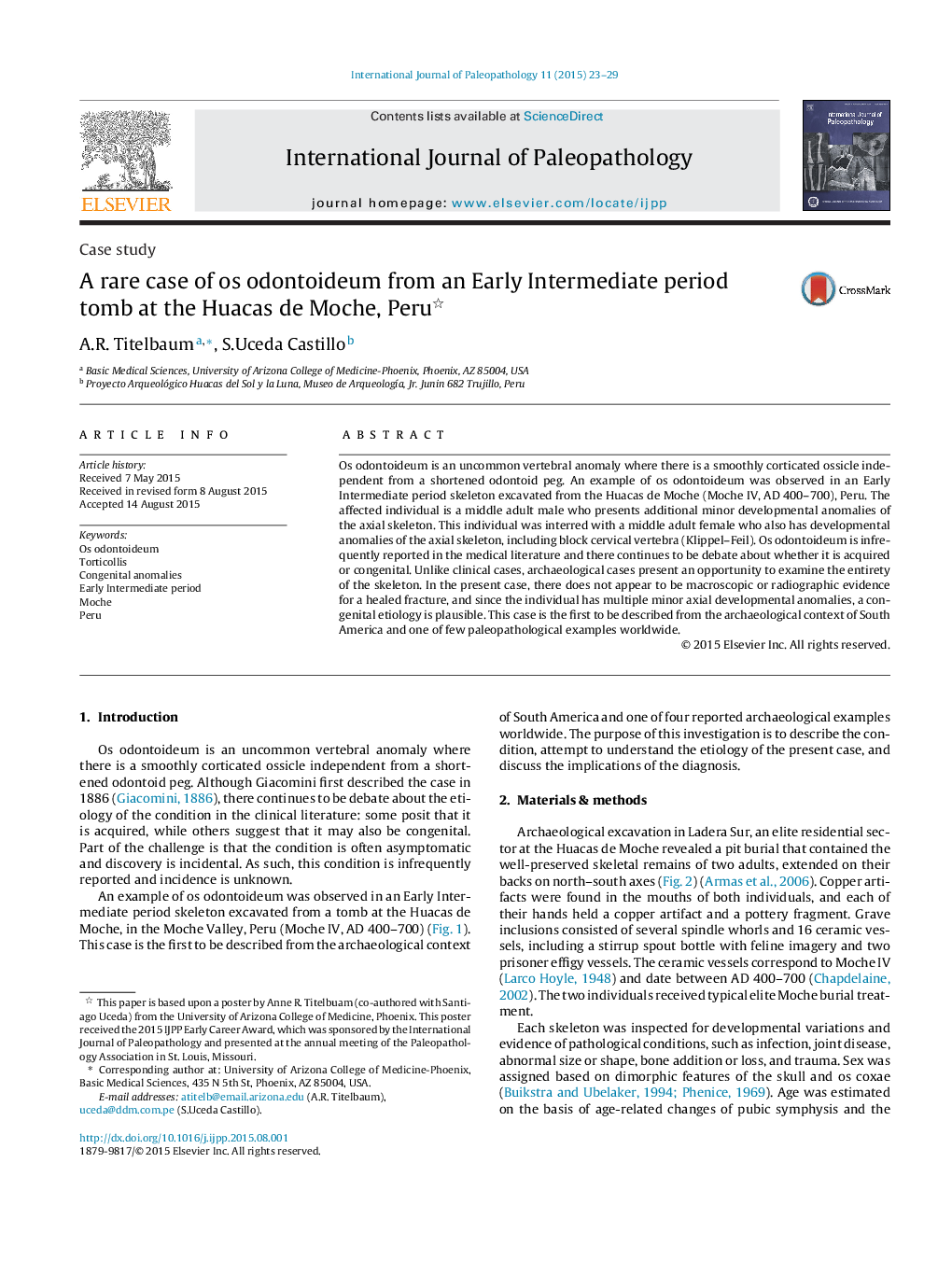| Article ID | Journal | Published Year | Pages | File Type |
|---|---|---|---|---|
| 6554844 | International Journal of Paleopathology | 2015 | 7 Pages |
Abstract
Os odontoideum is an uncommon vertebral anomaly where there is a smoothly corticated ossicle independent from a shortened odontoid peg. An example of os odontoideum was observed in an Early Intermediate period skeleton excavated from the Huacas de Moche (Moche IV, AD 400-700), Peru. The affected individual is a middle adult male who presents additional minor developmental anomalies of the axial skeleton. This individual was interred with a middle adult female who also has developmental anomalies of the axial skeleton, including block cervical vertebra (Klippel-Feil). Os odontoideum is infrequently reported in the medical literature and there continues to be debate about whether it is acquired or congenital. Unlike clinical cases, archaeological cases present an opportunity to examine the entirety of the skeleton. In the present case, there does not appear to be macroscopic or radiographic evidence for a healed fracture, and since the individual has multiple minor axial developmental anomalies, a congenital etiology is plausible. This case is the first to be described from the archaeological context of South America and one of few paleopathological examples worldwide.
Related Topics
Life Sciences
Biochemistry, Genetics and Molecular Biology
Physiology
Authors
A.R. Titelbaum, S.Uceda Castillo,
